A quirk of geography has created a spot in southern Baja with nearly perfect winds for kitesurfing. In the last few years, Californians have built a thriving outpost there. Is the growth sustainable?
Days after Kirk Robinson got fired from a corporate job he hated, he and a windsurfing buddy loaded their gear into his Volkswagen van and headed south from Los Angeles in search of a mythic beach.
It was the early 1990s, and the two had heard vague reports of a remote spot near the end of Baja where the wind blew strong and smooth from noon to sunset.
In about three days, they covered more than a thousand miles with no luck. They were tired and discouraged, studying a map at a restaurant in La Paz, when they noticed a broad bay about an hour south that looked like it might have potential. After a few beers, they decided to give it a shot in the morning because they had nothing better to do.
The final stretch required coaxing the old VW over a steep mountain and across a blisteringly hot, frying-pan-flat desert. Then they reached the bottom of La Ventana Bay.
There they found “epic wave conditions for, like, three days nonstop,” Robinson recalled. “It was just incredible.”
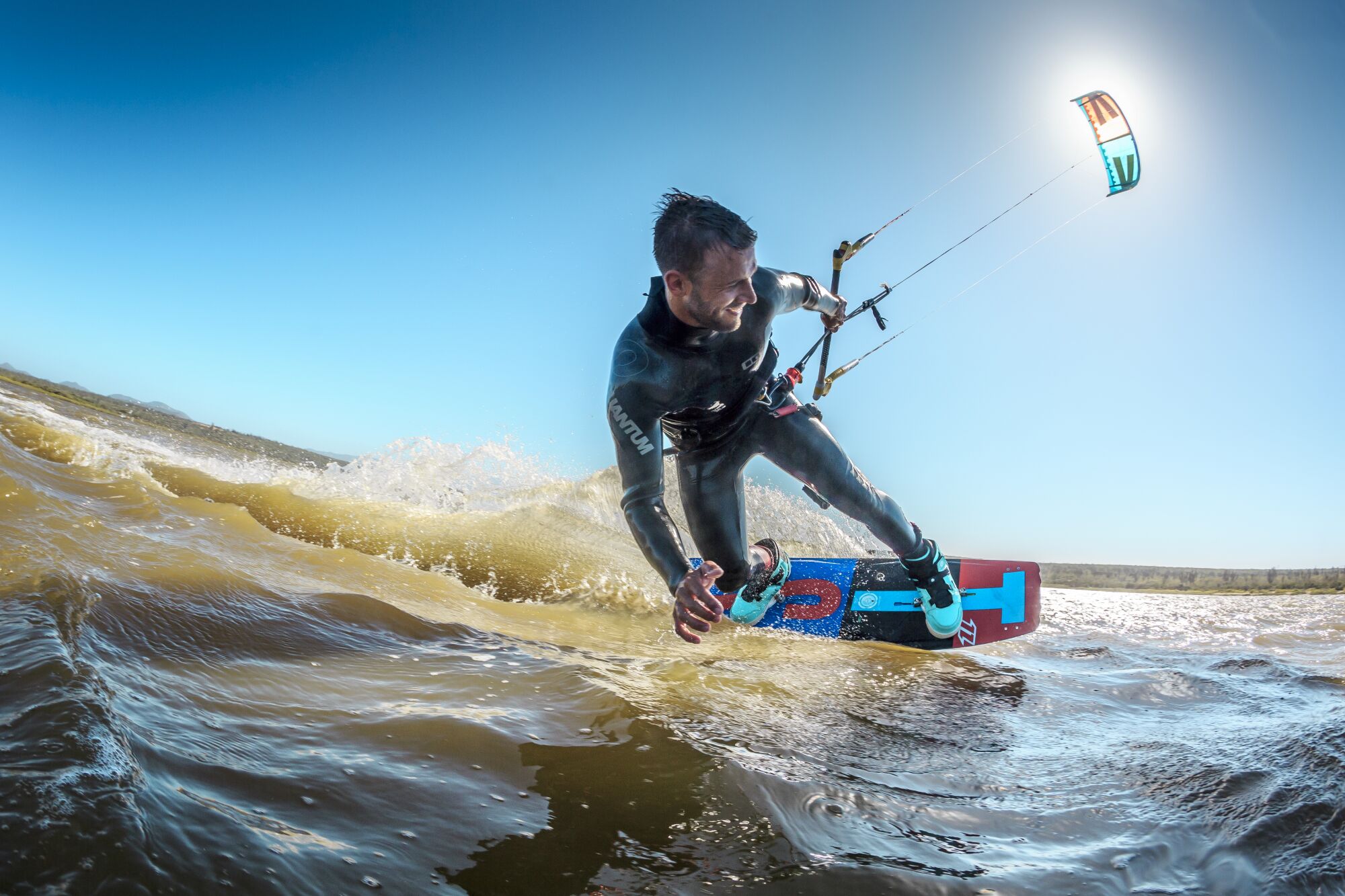
In a fit of escapism that made his mother “apoplectic,” Robinson mortgaged everything he had and scraped together $35,000 for a scrubby acre and a half of sand and cactuses on the shore of the nearly deserted bay. He didn’t dream of getting rich; he just hoped to make enough teaching windsurfing and renting modest casitas to keep himself in tacos and beer.
Today, La Ventana is one of the premier wind-sports destinations on the planet, drawing adventure-loving athletes from Europe, Canada and especially California. What was once a fishing village of a few hundred now hosts close to 10,000 people during the windy season, which runs from late November to late March.
Vacant lots a fraction of the size of Robinson’s old place sell for millions. A compound of casitas not much bigger than the one he built is on the market for $14 million.
Much of the run-up in prices has come in the last three years, said Nikky Avatara, a real estate agent who moved from Lake Tahoe to Baja a decade ago.
It’s the latest example of how the map of destination locales has been remade by a generation of young, tech-savvy thrill seekers who learned during the pandemic that they can work from anywhere.
“It’s a global, social awakening about tourism and how we want to spend our time,” said Olivia Rose Withington, who grew up in Cozumel and moved to La Ventana 15 years ago with her family. They own Playa Central, a big, yellow converted warehouse on the beach that serves as a bar, kitesurfing school, live music venue and de facto town center.
In many places, including Lisbon, Portugal, and Mexico City, the post-pandemic wave of digital nomads has driven up rents and led to widespread resentment from locals. That has been less of an issue in rural La Ventana, where Mexican families like Withington’s own many of the businesses and where others have owned their homes and land on the bay for generations and have profited from selling vacant parcels to foreigners.
“The quality of life has greatly increased because of the money coming in,” Withington said. “Now kids can go to college; there are lawyers and doctors and nurses being educated.”
But the rapid growth has raised other concerns about sustainability in an outpost that remains remote — it has one paved road and is a two-hour drive north of the Cabo San Lucas airport across little but desert.
There are no sewers — everyone has septic tanks — and there are widespread fears about what will happen if those leak into the bay.
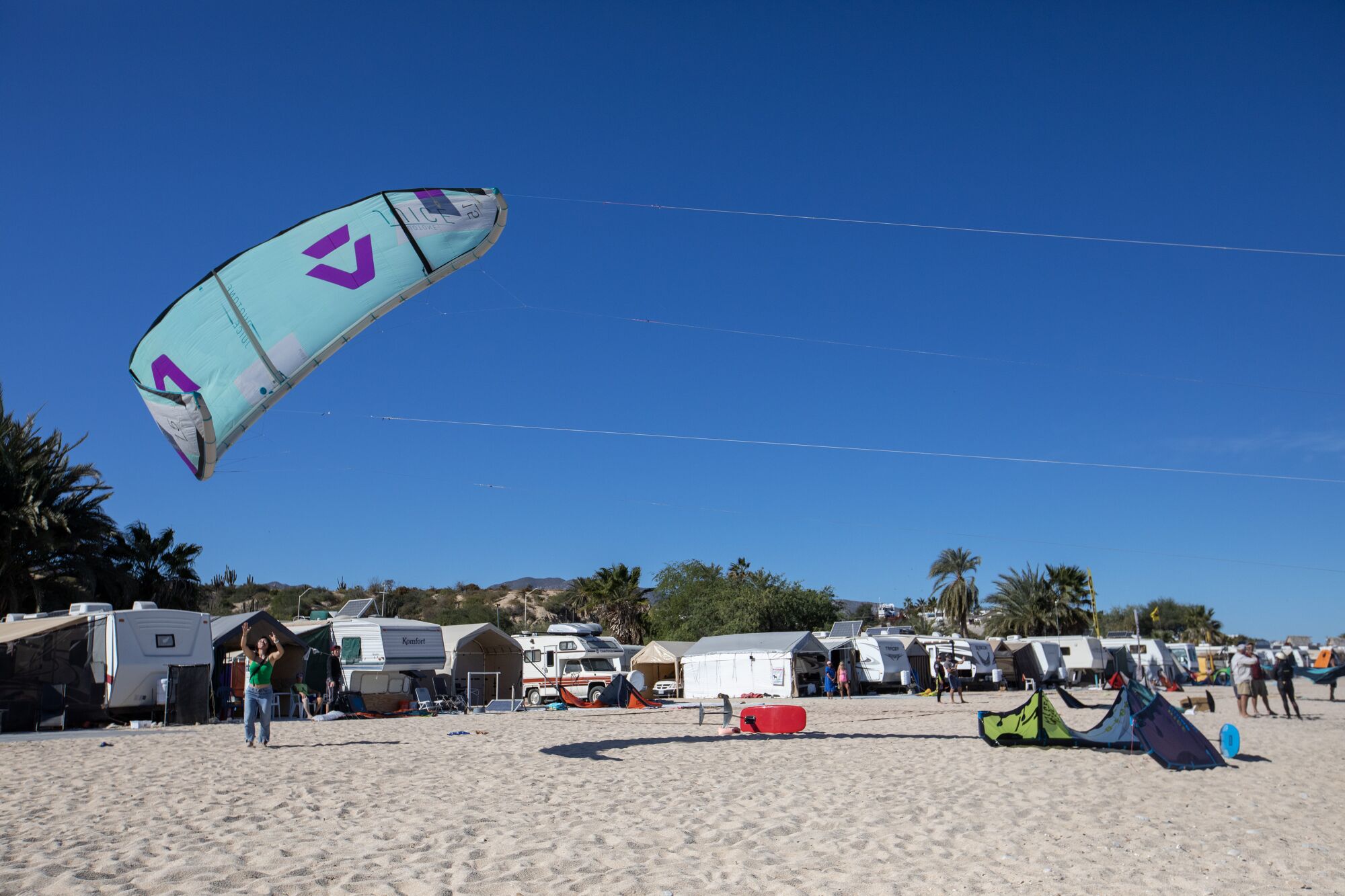
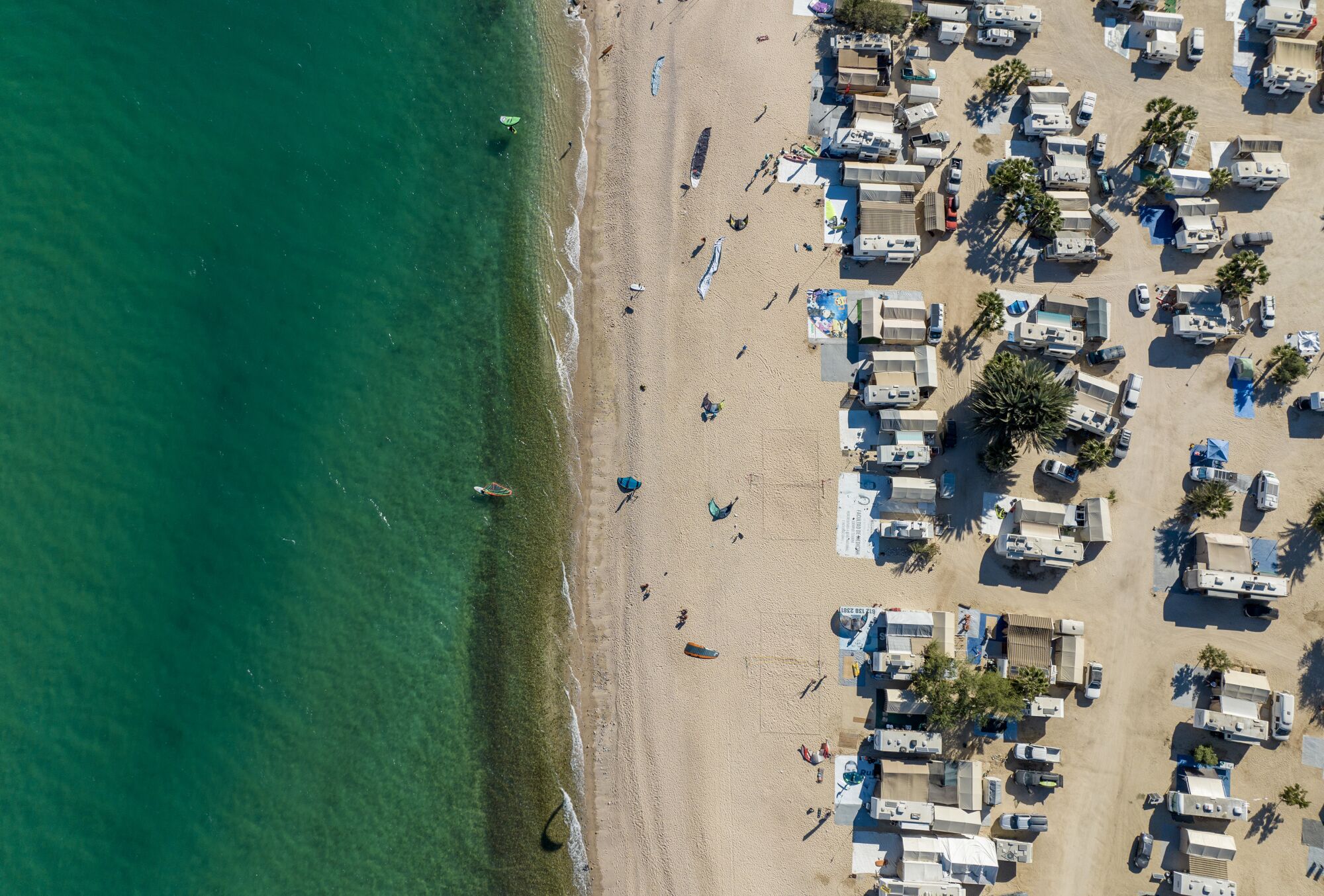
Older buildings in the south end of town are connected to a pipe that carries fresh water, but the new homes in the north rely on water trucked in from a local aquifer. With hundreds of open building permits, about double the number from a year ago, there’s a lot of anxiety about how long the water will last.
And many foreigners who were drawn to La Ventana by the wind in their youth are now retiring here to take advantage of the relatively low cost of everything except housing. But they’re used to air conditioning, and all those units running in the summer cause frequent power outages.
The problem only gets worse when a storm hits, said Rico Rodriguez, a kitesurfing instructor who moved to La Ventana from La Paz to build a life around the wind.
“We’ll lose power for a week,” he said.
Those growing pains are mostly taken in stride by locals, many of whom are grateful for the chance they’ve had to build small, thriving enterprises in the relative anonymity of the desert.
More ominous is the fear that their success has caught the eye of what some describe as Mexico’s “oligarchs” — old, wealthy families from the cities and nouveau riche drug cartel bosses whose investments have filled places like Cancun and Cabo San Lucas with all-inclusive resorts that destroy local business.
“I would say the greatest threat tourism poses here is putting us on the map for those people,” Withington said. Once they’re involved, it’s like “development wildfire.”
::
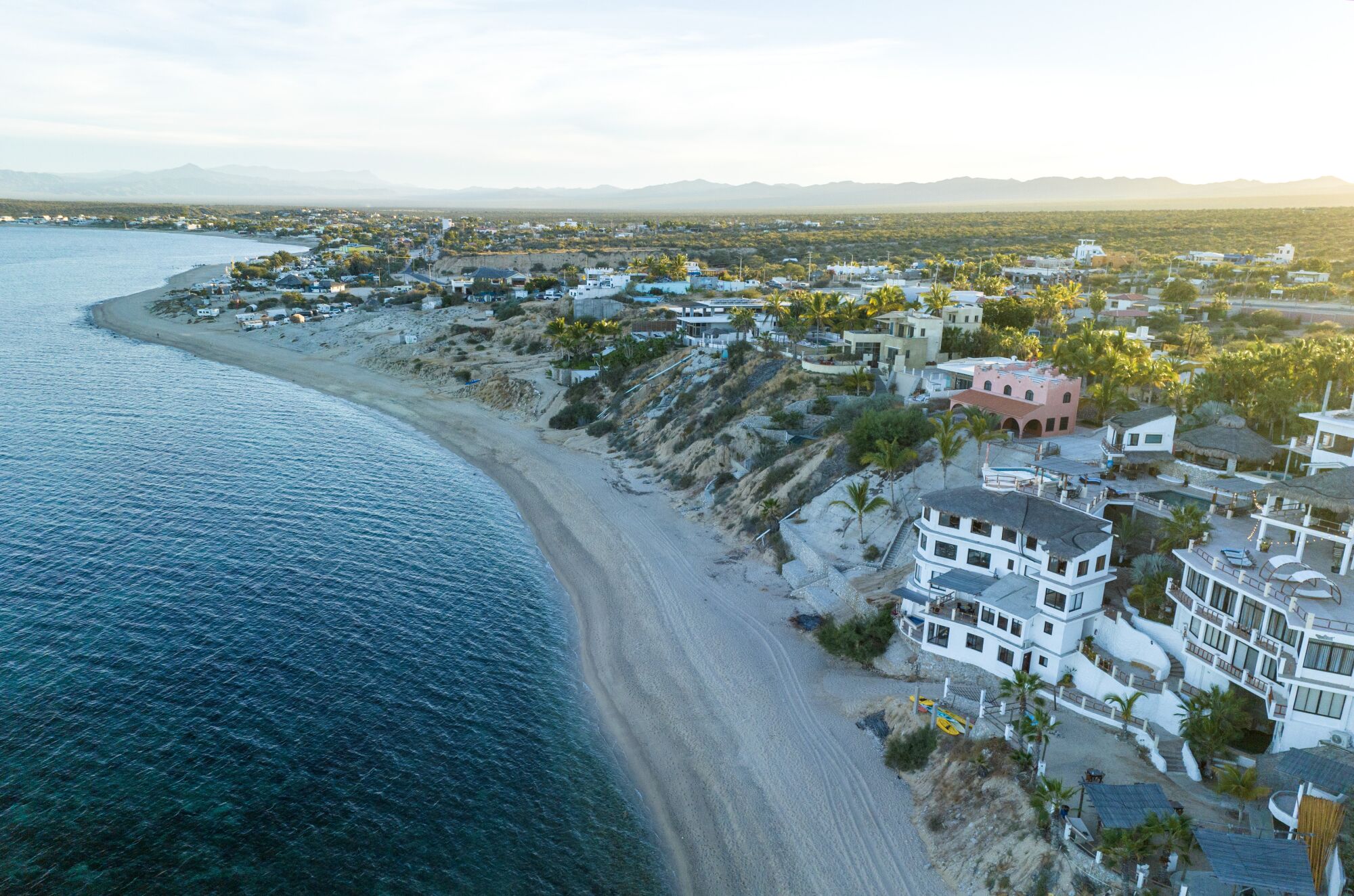
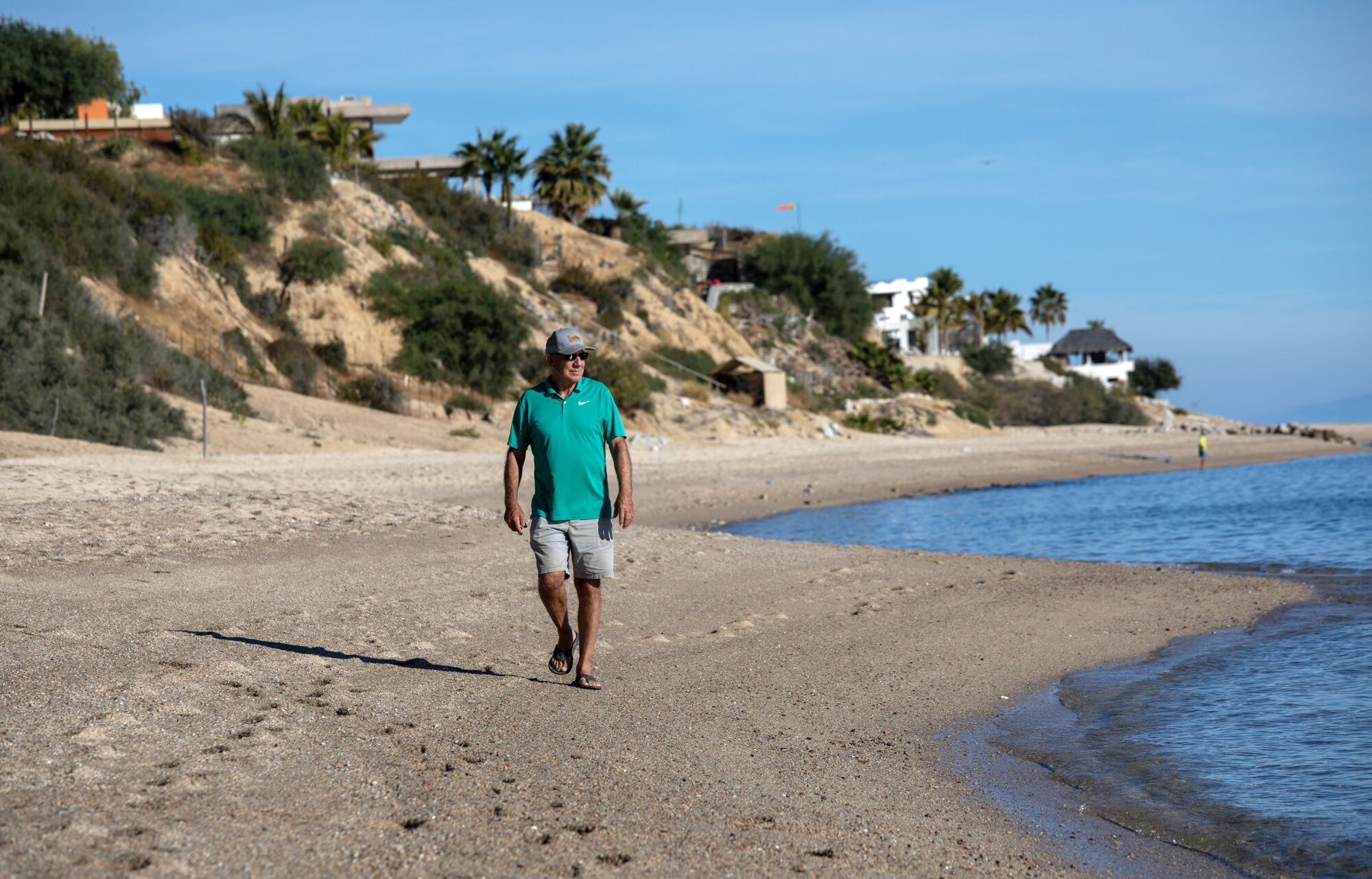
The natural beauty in this corner of Baja is breathtaking, but the feature that draws so many people is invisible.
In the winter, the weather pattern that creates Santa Ana winds in Southern California sends a steady breeze from the north down the eastern shore of the Baja Peninsula along the Gulf of California.
Just before it reaches La Ventana, that breeze gets funneled between the mountains and a long, skinny island that runs parallel to shore and juts 2,000 feet above the water. That creates a Venturi effect, squeezing the wind into a narrow passage and speeding it up, the equivalent of sticking your thumb across the end of a hose.
That wind whistles into La Ventana Bay, where another fortunate quirk of geography provides a second boost. Just behind the town lies that big, flat patch of desert Robinson crossed 30 years ago. It’s surrounded by mountains on three sides and, like the frying pan it resembles, heats the air above the surface, causing it to rise quickly, to be replaced by cooler air rushing in from over the water. That’s called a thermal.
La Ventana’s thermal is so strong and reliable that it has catapulted this pueblo into the pantheon of great wind sports destinations along with Maui’s North Shore, the Columbia River Gorge, Tarifa in Spain — at the narrowest gap between Europe and Africa — and Cape Town, South Africa.
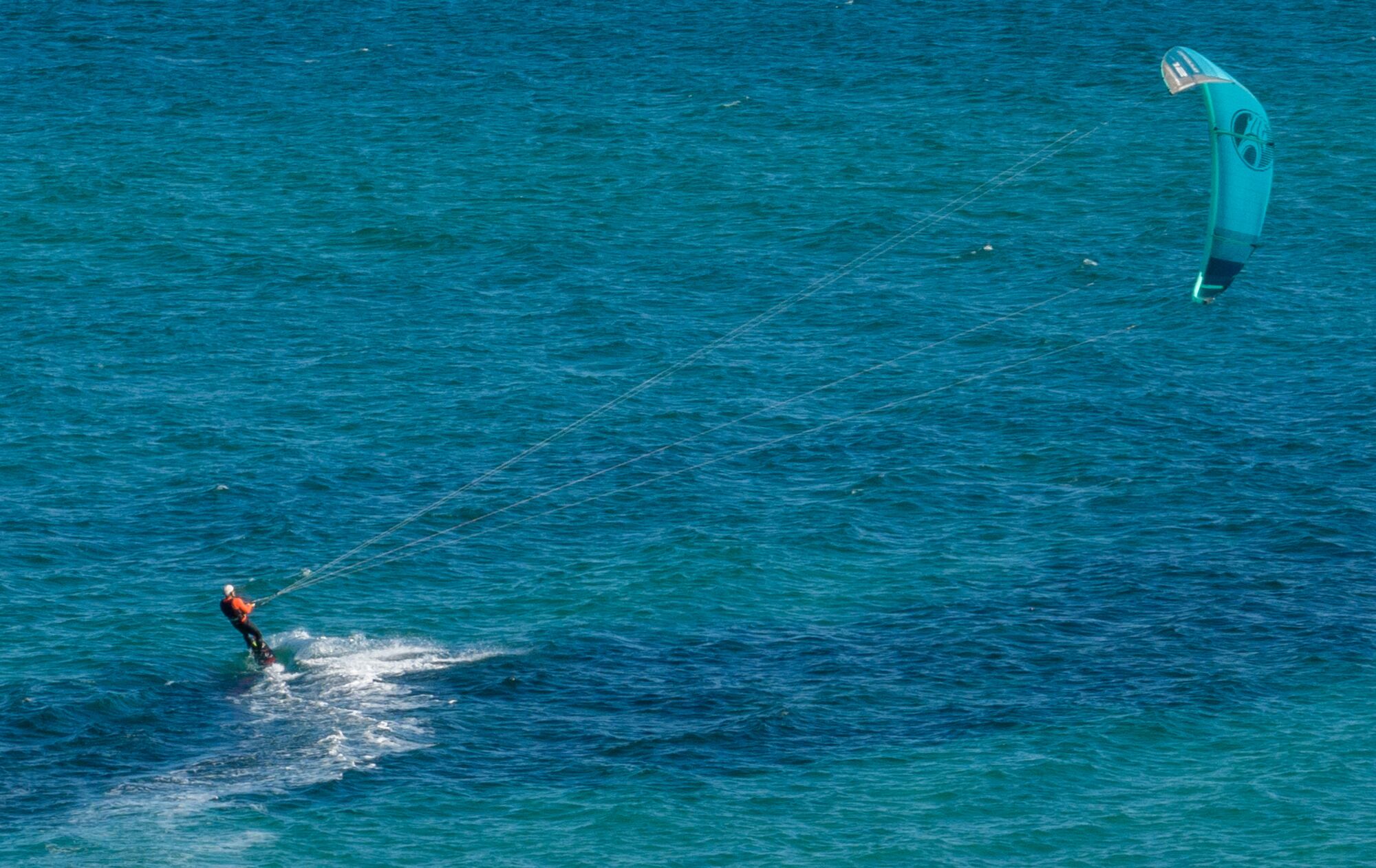
Windsurfing, the sport that drew early adventurers, relies on a big, heavy board with a sail screwed into the middle of it. The gear is bulky — you need a truck to haul it around — and it’s notoriously difficult to learn. It’s no surprise windsurfing all but disappeared about 20 years ago when kitesurfing came along.
Kites are large, but light, and they fold into a small backpack. They’re controlled with long, thin lines that weigh next to nothing. Strapped to the rider’s waist with a padded harness, kites fly 80 feet overhead where the wind is stronger than at the surface. And kites move in wide, sweeping arcs, generating much more power than a traditional sail.
Flying one, however, involves a steep learning curve that’s sometimes violent — almost nobody graduates without at least one memorable mishap, or “kitemare.” But people who persist are rewarded with an experience that’s hard to match.
Regular surfers might spend hours lying prone on a board, paddling back and forth hoping for a euphoric ride that usually ends in seconds.
For kite-surfers, that climactic sensation can last for hours. On a good day, even a distance runner’s legs wobble and fail long before the wind does.
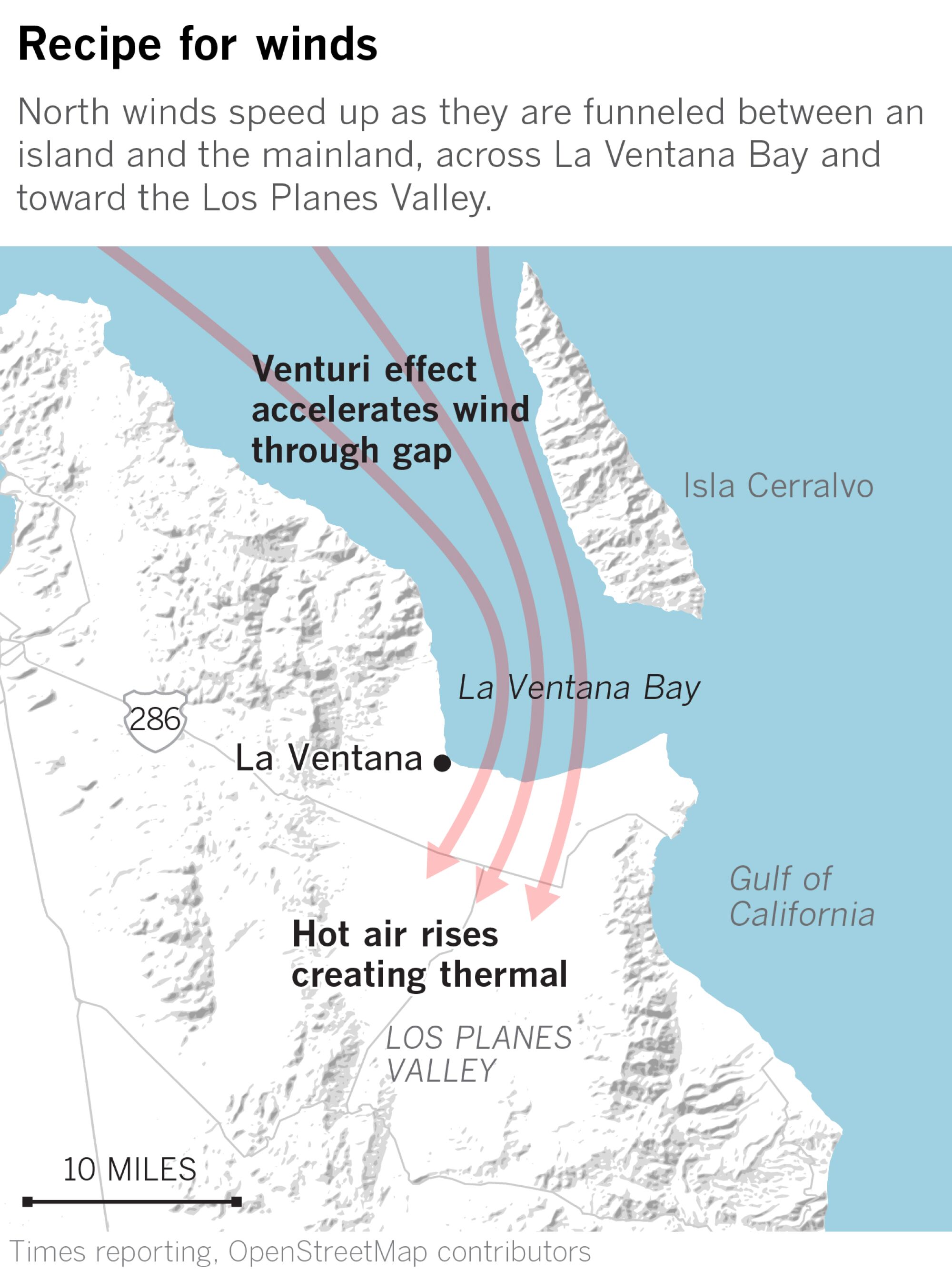
Once a kiter gets away from the shore, the only sound comes from the wind and the board skipping across the surface at 20 mph.
Out there, a rider can reduce the kite’s power to catch a swell and cruise in front of it, pushed mostly by the surging force of the water underfoot. Or they can turn around, increase the power, and charge directly at an oncoming wave, using it as a ramp to launch 20, 30, 40 feet off the water.
That moment at the apex of a good jump, drifting in almost perfect silence high above a roiling sea, is pure magic.
Done properly, landings are a thing of beauty. A well-steered kite acts like a parachute and can deposit the rider on the downward slope of a swell, allowing them to maintain their speed and surf away gracefully, sometimes to cheers from spectators on the beach.
Done poorly, all bets are off. When a kiter senses things are going wrong midair, their best bet is to pull their limbs close to their body and try to hit the water butt first, like a kid doing a cannonball off the high dive. That gets cheers too.
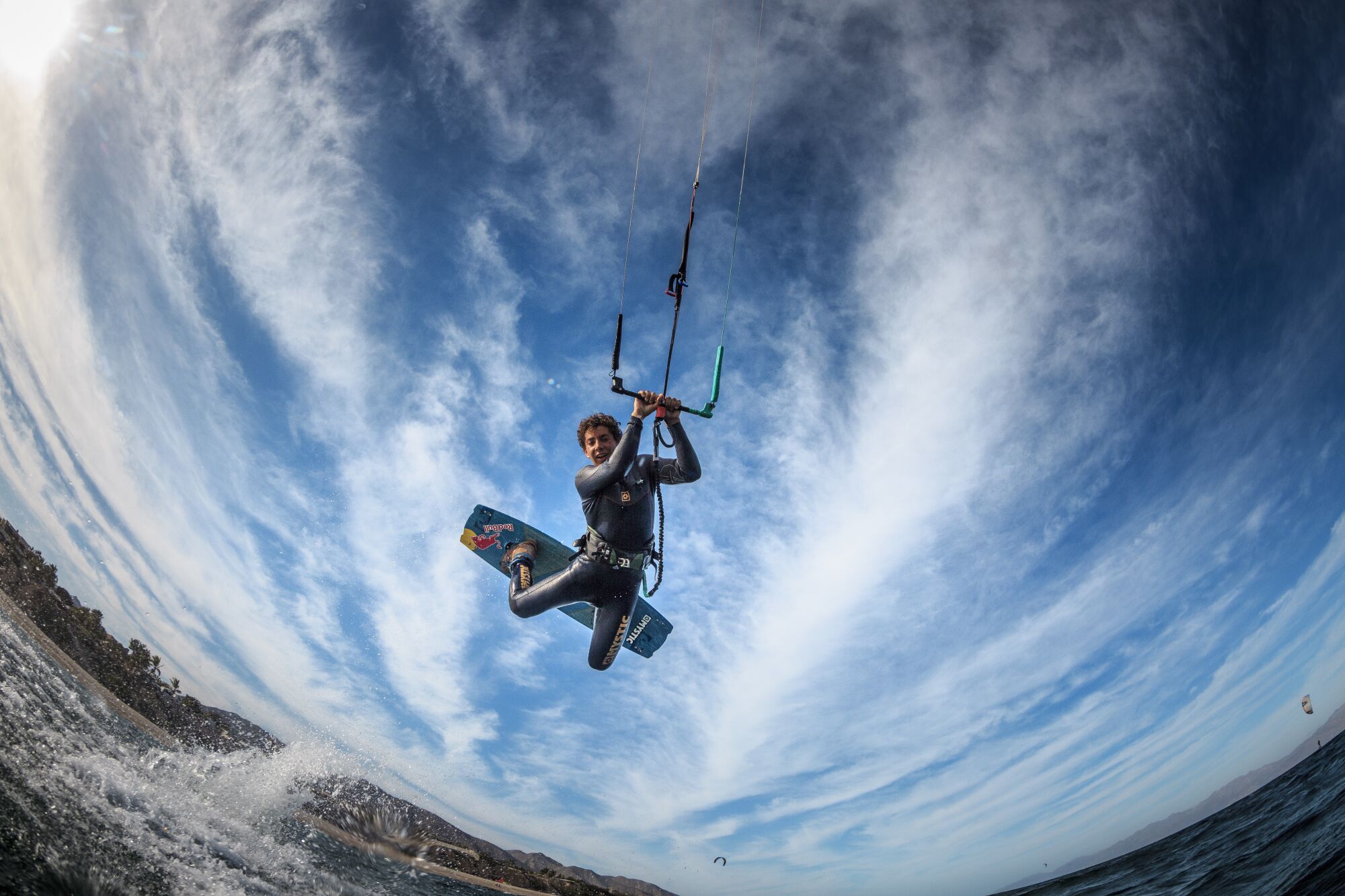
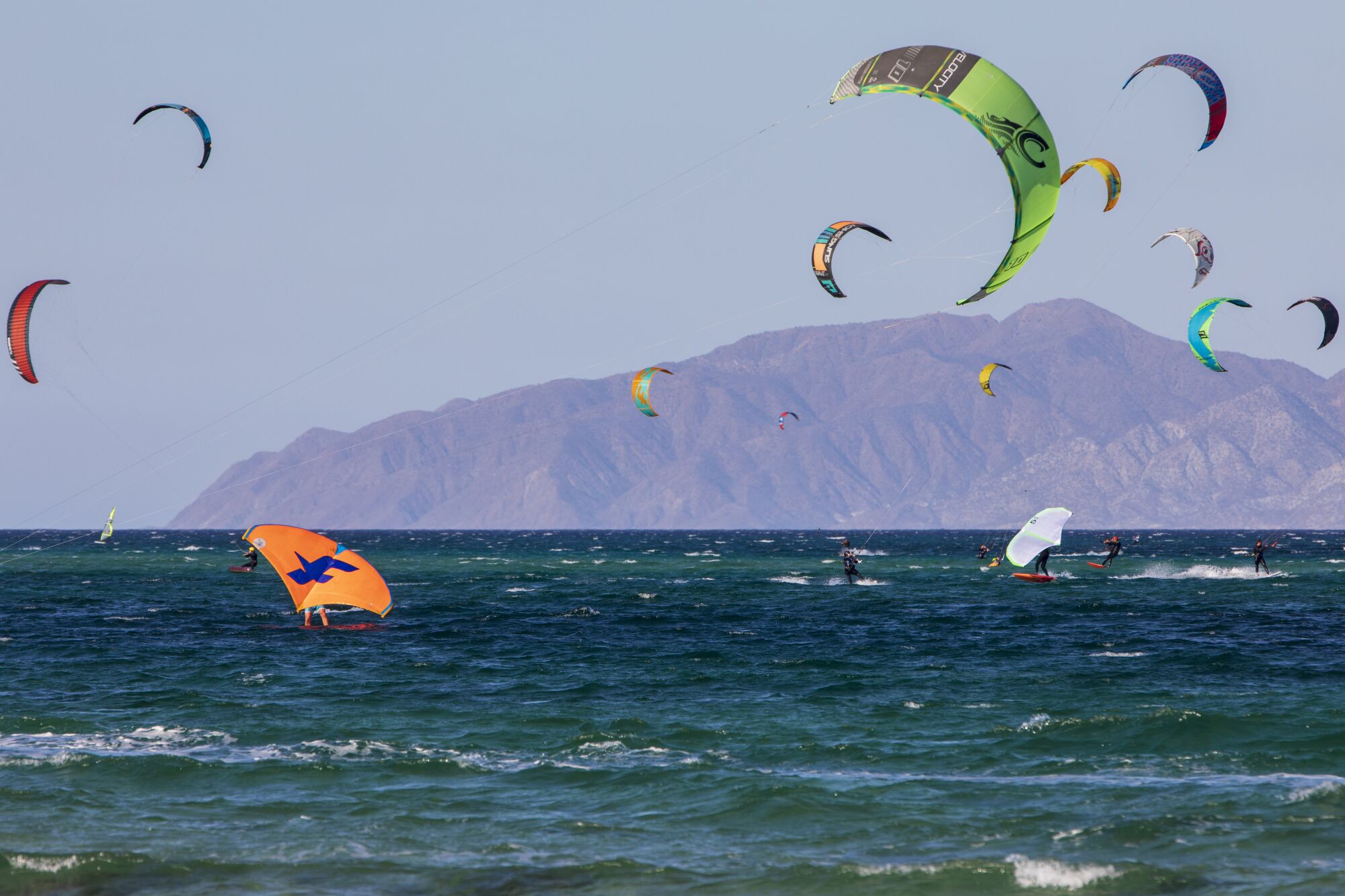
Bruised egos and battered gear are common, serious injuries mercifully rare. But it looks risky, which is one reason kitesurfing has never become more than a niche sport.
The next evolution, replacing the kite with a handheld, inflatable wing, is quickly catching on. There’s less power involved, and no long lines to get tangled in, so “winging” is much less intimidating — an accessibility that contributes to the crowds at popular wind destinations, including La Ventana.
“It’s safe to let kids try,” Robinson said, and “they pick it up fast.” Aging kiters, whose bodies can’t take the beating anymore, are also making the switch.
“You could probably keep winging until you’re 100,” Robinson said.
::
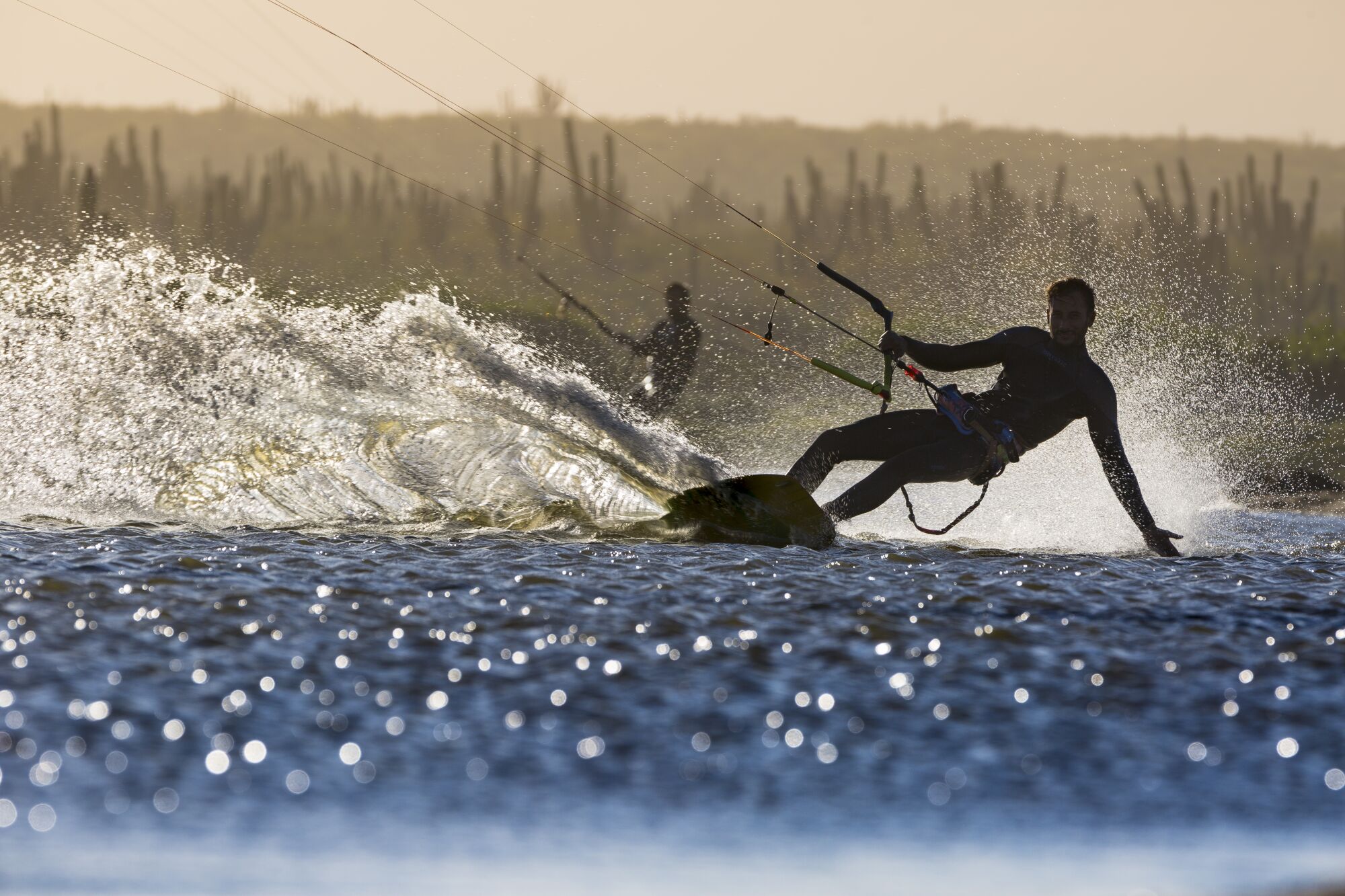
After telling his story for about an hour over breakfast recently in La Ventana, Robinson, 67, leaned back in his chair and cradled his coffee cup.
Back in the early ’90s, before the internet, precise information was hard to come by, he said. Most of what he knew about the mythically windy beach came from magazines and word of mouth: It was called Las Cruces, it had a club that Bing Crosby and Desi Arnaz belonged to, and “this isn’t it,” he said, pointing at the bay.
“We never found it on that original trip,” he said, but that beach is not very windy, anyway.
What they did find is better than they dared to dream. Three decades later, just before the recent run-up in prices, Robinson sold his land and kitesurfing school for about a million dollars, or nearly 30 times his initial investment.
“I never wanted to be wealthy, or I never would have gone into windsurfing,” he said. “It was like a vow of poverty.”
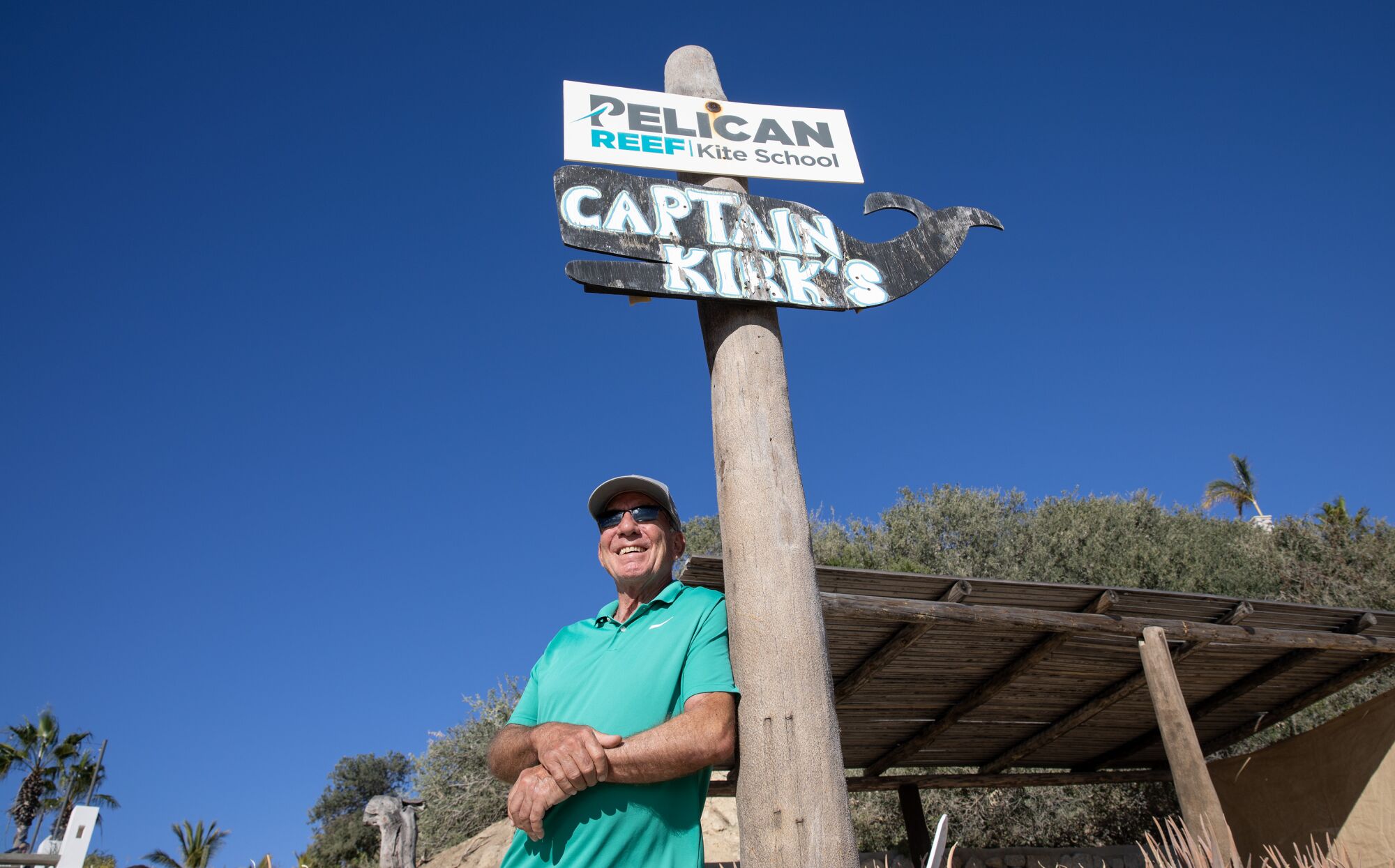
Robinson, his wife (another visiting Californian whom he met in La Ventana), and their two rescue dogs — both locals — still spend winters by the bay, in a house across the road from their old property. Despite the rapid development all around them, they can’t tear themselves away. The magical light, the stark desert.
“It’s kind of like Santa Fe with an ocean; we just really fell in love with being here.”
His mom eventually forgave him
Source: The San Diego Union-Tribune






